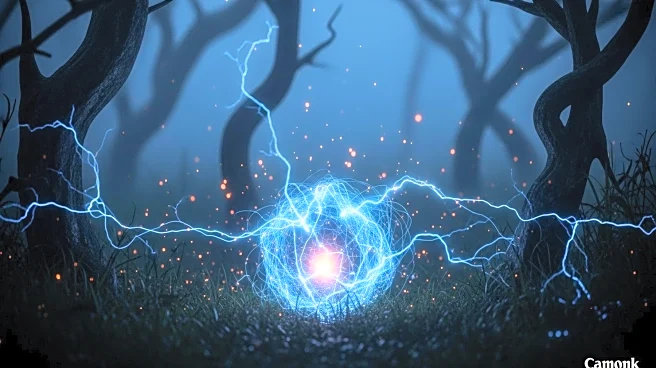What is the story about?
What's Happening?
A new study proposes that the mysterious will-o'-the-wisp phenomenon, characterized by hovering blue flames over bogs and marshes, may be caused by microlightning igniting microscopic methane bubbles. Researchers, led by Dr. Richard Zare from Stanford University, captured flashes of electricity between charged methane bubbles using high-speed cameras. This microlightning, occurring at a minuscule scale, generates enough energy to ignite methane, producing the eerie glow associated with will-o'-the-wisps. The study challenges previous explanations, such as swarming insects or static electricity, and suggests that microlightning could offer sustainable methods for chemical processes.
Why It's Important?
Understanding the will-o'-the-wisp phenomenon through microlightning could have broader implications for chemistry and environmental science. The ability to harness microlightning for chemical reactions presents potential applications in reducing atmospheric methane, a potent greenhouse gas. This research could lead to more sustainable options for chemical processes, contributing to efforts in combating climate change. The study also highlights the importance of exploring natural phenomena to develop innovative solutions for global challenges.
What's Next?
Future experiments aim to scale up the microlightning mechanism for commercial and industrial applications. Researchers are exploring its potential in triggering chemical reactions that reduce greenhouse gas emissions. The study opens avenues for further investigation into microlightning's role in oxidizing trace gases released at the sea surface, which could impact global warming.
Beyond the Headlines
The study underscores the significance of interdisciplinary research in uncovering scientific explanations for phenomena traditionally attributed to folklore. By bridging chemistry and environmental science, researchers can develop novel approaches to address environmental issues, demonstrating the transformative power of scientific inquiry.
AI Generated Content
Do you find this article useful?
















